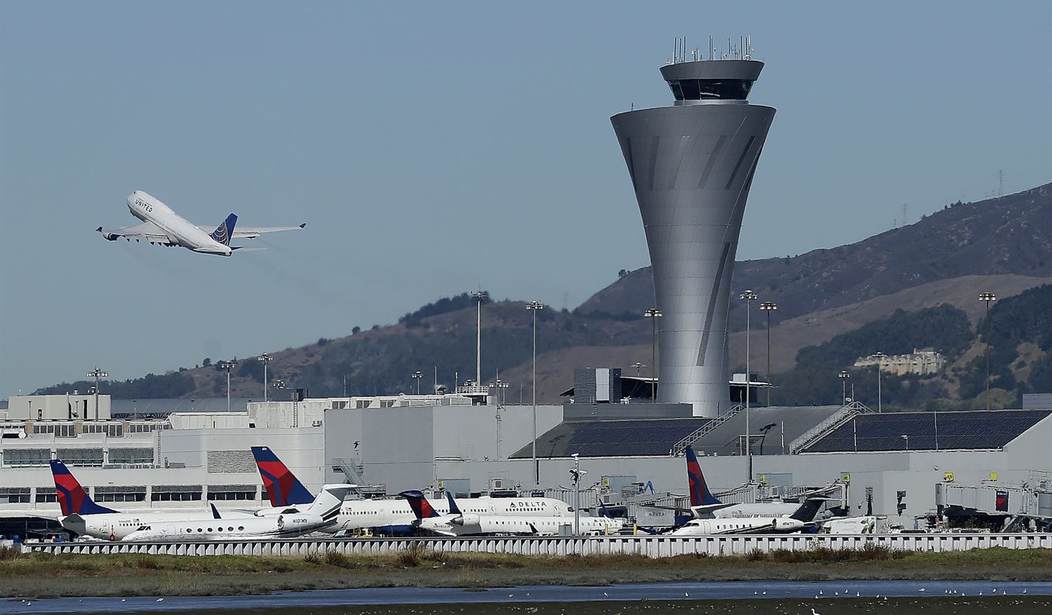In 1903, just before Christmas in Kill Devil Hills, North Carolina, two brothers dove headfirst into frigid winds testing the ability of their latest invention to hover above the ground. After many failed attempts, and countless critics dismissing them as “chasing a fantasy,” the Wright Brothers recorded the first flight. It lasted a mere 12 seconds, but little did they know that just a few decades later, their drive and innovation would forever change the world.
That pioneering spirit defines America’s aviation story. Today, more than 3 million people fly on airplanes every single day. Civil aviation contributes more than $1 trillion to America’s GDP, accounting for millions of jobs and connecting families, businesses, and communities. Air travel is not just a convenience. It is a pillar of the modern American economy and a backbone of our national security. Yet with so much riding on it, our air traffic controllers - not to mention the American flying public - are relying on technology that belongs in a museum, hoping it works and is safe.
Stepping inside a control tower today feels like time travel. The towers themselves are antiquated. You’re likely to see computer systems running on software that still relies on floppy disks. Controllers shuffle paper and pencil flight strips instead of using modern digital systems. This manual process was cutting edge in the 1960s, but in 2025 it borders on negligence.
The HOST computer system, the backbone of radar processing, is so old and fragile that the FAA has had to recall retired technicians just to keep it running. Even worse, FAA staff have openly admitted to scouring eBay and other secondhand marketplaces to find replacement parts for critical equipment. Imagine running the world’s busiest and most complex airspace on components you can only find through online auctions. That is the reality of American air traffic control today.
For decades, presidents of both parties have promised modernization. They commissioned studies, announced roadmaps, and held press conferences about “NextGen” upgrades. But when the political costs grew high or the bureaucratic pushback became too strong, they quietly shelved the plans. Kicking the can down the road became easier than confronting entrenched interests or admitting that the system was dangerously behind the times. America’s airspace remains the safest in the world only because of the skill and professionalism of controllers and pilots, but we are fooling ourselves if we believe that record will last forever with 1960s hardware and 20th-century procedures.
The warning signs are already here. A 2023 investigation by The New York Times documented a troubling increase in near misses, with the FAA reporting a 25 percent rise in such incidents over the preceding decade. Pilots and controllers are doing extraordinary work to compensate for the gaps in technology, but they should not be forced to carry that burden indefinitely. The system itself must be fixed.
President Trump and Secretary Duffy have a rare opportunity to do just that. Recently, the FAA gave the green light for industry to start working on and turning in their proposals for a contract to stand up a new air traffic control system for managing U.S. airspace. It’s a golden opportunity to establish a new golden age of flight.
Where others have hesitated, the Trump administration must press forward. Modernization cannot mean tinkering around the edges. It requires a complete reset. Out with the old, in with the new. That means replacing the outdated legacy government contractors and bureaucratic bloat responsible for the recent failings at the FAA with innovative new players. Too often, administrations that don’t want to “rock the boat” keep contractors leeching off taxpayers long after they have stopped delivering results. These entrenched players thrive on the status quo, which is exactly what President Trump is known for disrupting.
Players immersed in cutting-edge technology can take on the whole job. Every piece of the system must be knit together, from radar and computers to the companies entrusted with security, and updated as one for the 21st century. America cannot settle for patching cracks in a crumbling foundation. We need to rebuild with strength and vision.
The Wright Brothers proved that boldness and persistence could turn the impossible into reality. They did not accept the limitations of their time, and because of that, the world changed forever. Today, we face a similar moment. The limitations of outdated technology are threatening our safety, our economy, and our leadership in aviation. President Trump and Secretary Duffy have the courage to break the cycle of delay and deliver a system that matches the demands of modern air travel.
The time for delay has long passed. The time for excuses has run out. The time for a new Air Traffic Control system — one that is modern, secure, and built for the future — is here.
Ken Blackwell is an adviser to the America First Policy Institute and the Family Research Council in Washington, DC.
Editor's Note: President Trump is leading America into the "Golden Age" as Democrats try desperately to stop it.
Help us continue to report on President Trump's successes. Join Townhall VIP and use promo code FIGHT to get 60% off your membership.





